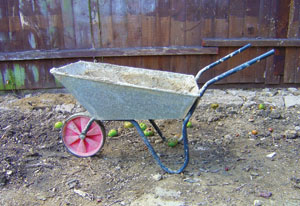Brighton & Hove City Council leader Jason Kitcat on the new Allotment Strategy
Our new Allotment Strategy, developed with allotment holders, has found that some 6000 people use one of the city’s 37 allotment sites every year. Whether people use allotments for cheap and healthy food, exercise, or as a pastime, the benefits are clear.
For those that have some outside space, growing at home is relatively easy – whether a vegetable bed in the garden, or a balcony box for herbs. But many residents don’t have any suitable space, meaning allotments are a popular way in which residents can grow their own food. There are about 1000 people on the city’s waiting list for allotments.
The Allotment Strategy recommends tackling the list by offering a range of plot sizes and by making sure that underused plots are returned to the system quicker. The Strategy also suggests that the council help allotment holders reduce water wastage to save money, and provide additional services such as building sheds and providing seedlings from the Council’s nurseries.
30 plots are run by charities or community organisations, providing access and facilities for vulnerable people, and we’d like to see this expand. We also plan to introduce a new pricing system to ensure that people on lower incomes are able to access allotments too.

There is as always great pressure on the city’s land – whether for housing, jobs, public infrastructure, or open space. We are particularly concerned that government legislation is creating a free-for-all for developers, and are looking at ways in which we can protect allotments from development.
Working with the Allotment Federation has been essential to producing this new plan which takes into account all the issues faced by allotment holders and the council. As a result we will not only improve the service for current allotment holders, but also enable many more people to enjoy the benefits of ‘growing their own’.




















